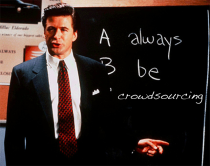Marketing Lessons in China from 15,000 Feet
|
On an 8 p.m. Spring Airlines flight from Kunming to Shanghai, a crew member started broadcasting about the long night flight ahead of us. Of the travelers among us, he remarked that about 40% on the flight were riding a plane for the first time (how true this is, I have no idea). He then proceeded to describe the plane we were sitting in — an Airbus 320 flying at an altitude of just over 10,000 meters and a speed of 700+ km per hour, twice the speed of the high speed railway (é«˜é“ – gaotie). As the country’s first low-cost airline (their market position is similar to Southwest in the United States), the lowest fares were only available online, which required a credit card to purchase. “You can’t find these fares at any agent or at our counter,” he explained, saying this was how the company kept costs low. “Perhaps you don’t have a credit card at this time, but now, you’re in luck. We understand that many of our customers may not have any credit cards yet, so Spring Airlines has partnered with China Construction Bank, the second largest bank in China to offer you an exclusive Spring Airlines credit card.” Additionally, he explained, you would be able to get 10% discounts at participating hotels and tour groups. And … the real kicker was … in understanding the (Chinese) consumer psyche … the first 25 individuals to apply today could apply fee-free, without requiring your shenfenzhen (the Chinese ID card). “Just push the service button overhead your seat and we’ll bring you an application” A series of dings went off at that point, as up and down the plane, travelers started expressing their interest. More than 25 dings out of a flight of about 180 passengers (an astonishing 15+% response rate) went off within the first two minutes, and passengers around me started diligently feeling out the holy grail for all credit card companies — the application. Even in a short 10-minute session like this, one could see the potential and uniqueness of the Chinese market. A low-cost air carrier who attracted budget-conscious travelers, many of whom may be experiencing their first flights ever on this segment, and then introducing the concept of reward-tied credit cards on this flight. Add in the sense of urgency while being able to hear others express interest, and you have the perfect target audience — any marketer’s dream. However, what I found most striking about this series of exchanges, was how it first started — instead of leading with the credit card offer at hand, the conversation started with a bit of educational information that would be of general interest to the majority of folks on the plane — where we were, our altitude, flight times, and some basics on the aircraft. It was an advertisement in the most Chinese form — building a relationship and general rapport before launching into an offer. Earlier that day, while on a train from Lijiang to Kunming, I experienced something similar and this time around, a train attendant was selling microfiber bath towels.  Similarly, before launching into his infomercial-like spiel, the attendant first started by giving some general information on the train and even quipping a few jokes. Again, the same sense of urgency and “act now” offer tactics were used, as he offered the first five buyers of the towels a buy-one-get-one free offer. As I sat in the hard seater section of the train (the cheapest section of the train), many of my fellow travelers were farmers who all sat transfixed at the demonstration. The lady next to me, a 50-year-old farmer from Keqing who belonged to the Bai minority, mumbled “it just feels like a regular towel to me.” Nonetheless, he ended up selling 20+ towels in our train car alone in the first five minutes. While these two scenarios represent very unique situations, both in travel, it was a representation of two basic Chinese business principles: 1)  The Chinese consumer market is a growing one. The demand for consumption within China is only starting to grow, and the next five years of China’s growth — as the 12th Economic Five Year Plan posited — will come from a consumer-led one. 2)  Guanxi is everything. Even within short, direct-response, and lead-generation campaigns, establishing initial rapport is important. The relationship has to be mutually beneficial and especially in cases like this, need to start with information that consumers may find immediately helpful. |




4 Comments